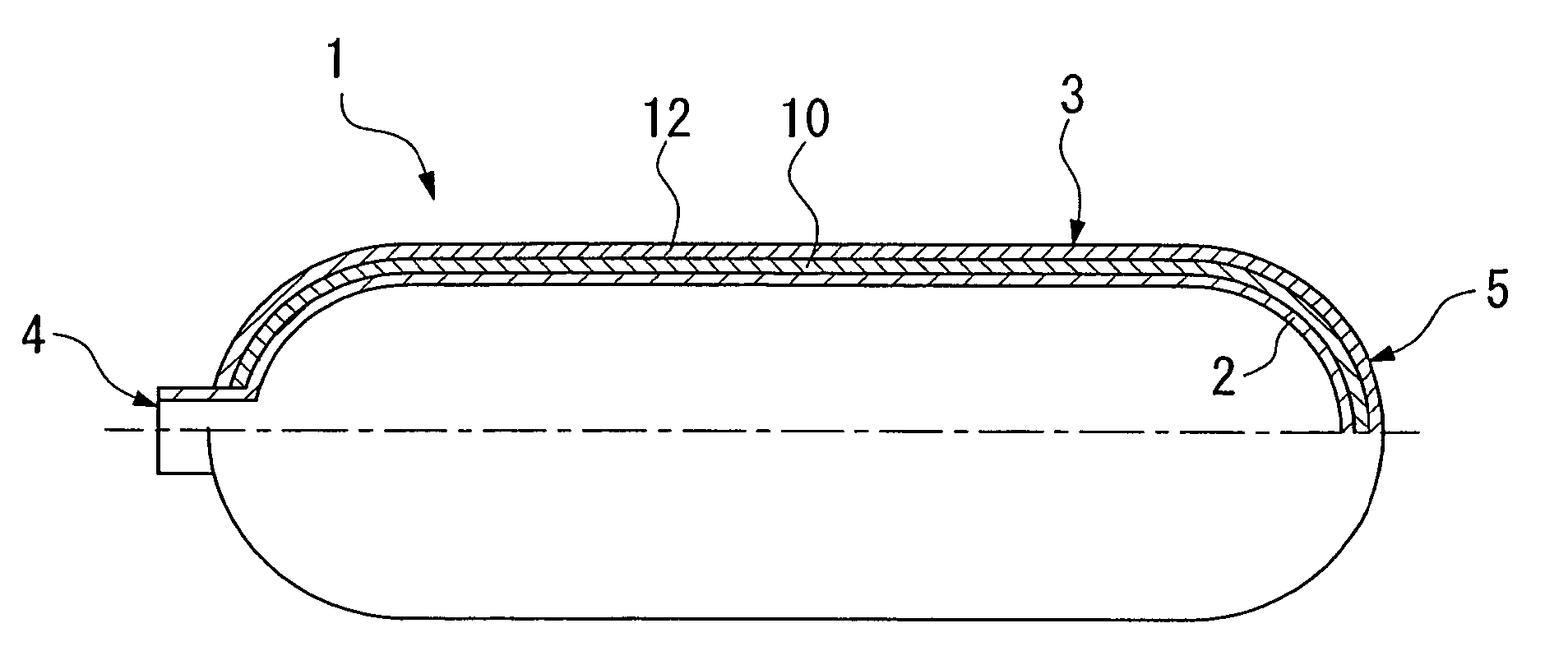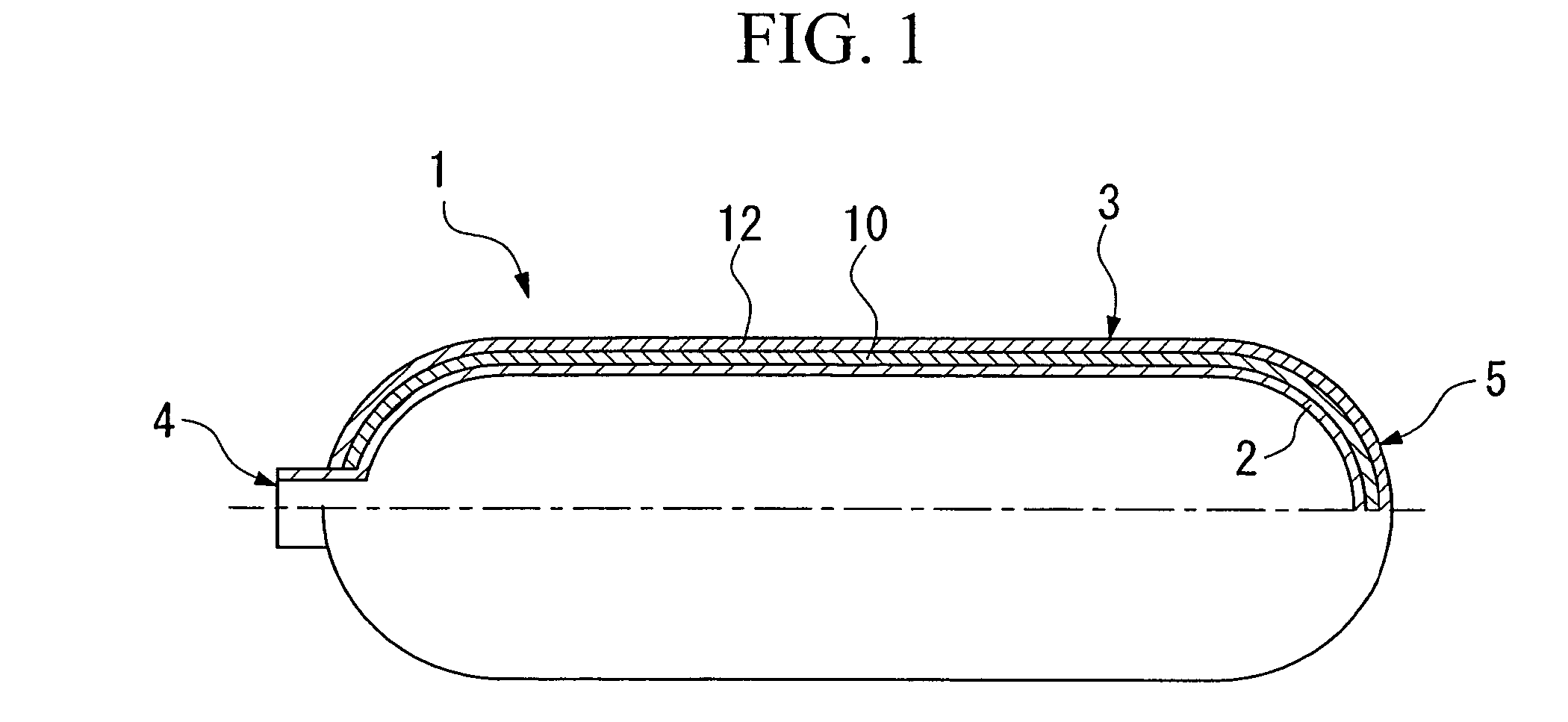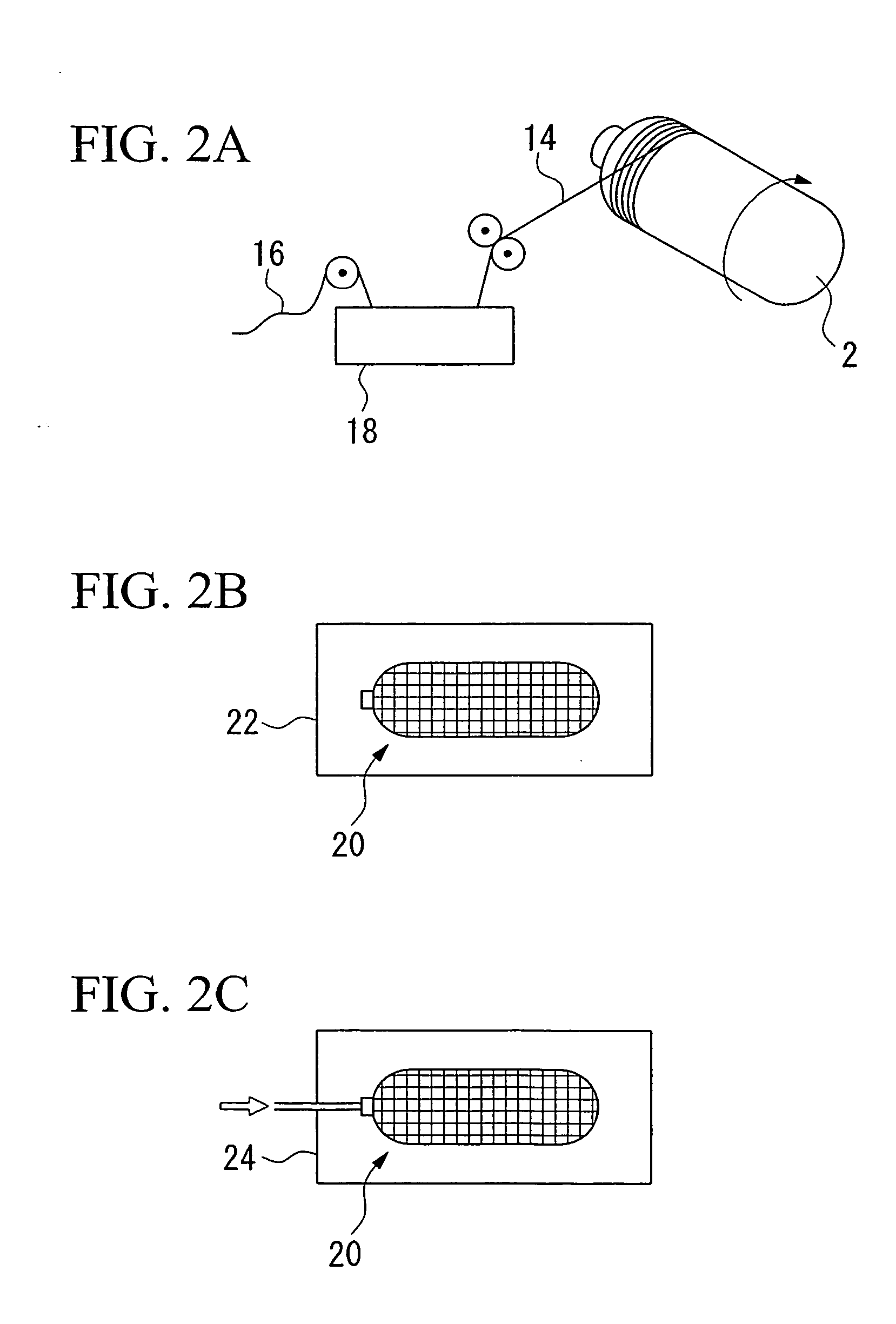High-performance pressure vessel and carbon fiber for pressure vessel
- Summary
- Abstract
- Description
- Claims
- Application Information
AI Technical Summary
Benefits of technology
Problems solved by technology
Method used
Image
Examples
embodiments
[0063] The pressure vessel of the present invention is described below by means of specific embodiments.
[0064] The evaluation techniques for the reinforcing fibers are as follows.
(Strand Strength, Elastic Modulus, Tensile Elongation)
[0065] These were evaluated in conformity with JIS R7601.
[0066] Strand strength was divided by strand elastic modulus so as to calculate tensile elongation.
(Average Diameter of Filament Cross-Section of Carbon Fiber Tow)
[0067] First, using the yield, density and number of filaments (filament quantity) of the fiber tow, the average cross-sectional area of a filament cross-section of a carbon fiber tow was calculated from the following Formula (1).
[0068] The yield of the fiber tow is the mass per unit length of the carbon fiber tow (fineness), and was measured in conformity with JIS R7601.
[0069] The density of the fiber tow was measured by the density gradient tube method in conformity with JIS R7601. Aav=1n⨯tp⨯10-3Formula (1)
[0070] Aav: avera...
first embodiment
[0095] A pressure vessel having a normal filling pressure of 70 MPa was prepared by the following procedure.
[0096] As shown in FIG. 2A, the reinforcing fibers (i) (elongation: 1.50%, elastic modulus: 350 GPa) were impregnated with matrix plastic so as to obtain the fiber reinforced plastic 14. Using a filament winding machine manufactured by Entec Composite Machines, Inc., the fiber reinforced plastic 14 was wound onto the vessel body 2, and fiber reinforced plastic layers of 5-layer structure were formed.
[0097] The fiber reinforced plastic layers had a five-layer structure of circumferentially oriented layer (C) / axially oriented layer (H) / circumferentially oriented layer (C) / axially oriented layer (H) / circumferentially oriented layer (C) in the order in which they were arranged from the inside (vessel body side) toward the outside (outer side).
[0098] In the obtained intermediate vessel 20, measurement result of the thickness of the fiber reinforced plastic layers at the center o...
second embodiment
[0112] A pressure vessel having a normal filling pressure (FP) of 70 MPa was prepared by the following procedure.
[0113] In the similar way as that in the first embodiment, fiber reinforced plastic layers having the fiber reinforced plastic 14 in which the reinforcing fibers (ii) (elongation: 1.64%, elastic modulus: 320 GPa) were impregnated with matrix plastic, were formed on the vessel body 2 so as to obtain the intermediate vessel 20.
[0114] The fiber reinforced plastic layers had the same 5-layer structure as that of the first embodiment. In the intermediate vessel 20, measurement result of the thickness of the fiber reinforced plastic layers at the center of the cylindrical section was approximately 13 mm.
[0115] The intermediate vessel 20 was subjected to heat treatment in the same way as that in the first embodiment. The mass of the fiber reinforced plastic layers was 5,633 g.
[0116] Next, the intermediate vessel 20 was subjected to autofrettage treatment in the same way as t...
PUM
| Property | Measurement | Unit |
|---|---|---|
| Pressure | aaaaa | aaaaa |
| Diameter | aaaaa | aaaaa |
| Height | aaaaa | aaaaa |
Abstract
Description
Claims
Application Information
 Login to View More
Login to View More - R&D
- Intellectual Property
- Life Sciences
- Materials
- Tech Scout
- Unparalleled Data Quality
- Higher Quality Content
- 60% Fewer Hallucinations
Browse by: Latest US Patents, China's latest patents, Technical Efficacy Thesaurus, Application Domain, Technology Topic, Popular Technical Reports.
© 2025 PatSnap. All rights reserved.Legal|Privacy policy|Modern Slavery Act Transparency Statement|Sitemap|About US| Contact US: help@patsnap.com



